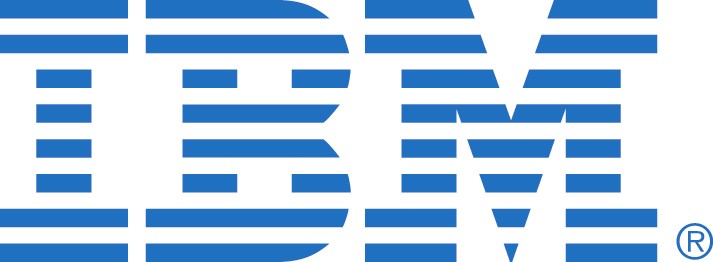50 hues of Big Blue: IBM’s transformation, according to Paul Moung
By A. Asohan August 22, 2014
- ‘Why would IBM even need sales and marketing staff?’
- New DNA and culture position it well for changing tech cycles
 IT is hard to credit these days, but once upon a time Armonk, New York-based IBM Corp was such a dominant force in the computing world that there was a saying, “Nobody ever got fired for buying IBM.”
IT is hard to credit these days, but once upon a time Armonk, New York-based IBM Corp was such a dominant force in the computing world that there was a saying, “Nobody ever got fired for buying IBM.”
It was a different era then, a time of mainframe computers and white-coated technicians behind sealed rooms, when the IT decision-maker carried the title of ‘EDP manager’ from the unsexy term ‘electronic data processing.’
IBM was after all the company that had invented or developed so many mainstays of the industry, from the floppy disk and the hard disk drive, to the automated teller machine (ATM) and the relational database.
The saying above has morphed, as has the company, but there was a time when the automatic choice for any … erm, EDP manager … was IBM. You didn’t even really need to sell the stuff. IBM and even its nickname ‘Big Blue’ were household names.
“When I first joined the company, I would tell my friends and family, including relatives, and they would ask what I did in IBM,” says Paul Moung, IBM Malaysia managing director.
“I would say I was a marketing representative, and they would ask what that meant. I would say, ‘I just sell products.’ You know what they would ask me then? ‘Why does IBM need salespeople?’
“I didn’t understand the question then. I felt insulted, although it was flattering for the company. Their reasoning was why would IBM even need sales and marketing staff? People were going to buy IBM anyway,” he recalls.
There is a difference between dominant and domineering. IBM began getting a stranglehold on the market in the 1950s, Competitors were being crowded out, or so they felt. After complaints from some of them, in January, 1969, the US Department of Justice (DoJ) filed an antitrust lawsuit against the company.
The lawsuit accused IBM of, among other things, predatory pricing and anti-competitive business practices. It would result in 13 years of litigation, including a six-year trial, which left the company battered, with the DoJ attempting to break it up into different companies.
In the interim, the now-defunct Digital Equipment Corp sparked off the minicomputer revolution, Apple Computer Inc (now Apple Inc) kicked off the personal computer revolution, and a host of other technological advances saw Big Blue, distracted by the on-going litigation, trying to catch up.
“The 13-year investigation, which required IBM to retain 200 attorneys at one point, fizzled in the early 1980s as the computing landscape shifted from mainframes to personal computers,” US-based technology news portal CNET recollects.
“The [US Government] abandoned the tainted effort entirely in 1982, as clones of the IBM PC eroded Big Blue's dominance,” it added in a report comparing the IBM case with the one the DoJ brought forward against Microsoft Corp in 2000.
The aftermath saw IBM voluntarily unbundling its hardware, software and services businesses, a state of affairs that would remain until 1993 when the IBM board appointed as chief executive officer (CEO) Louis V. Gerstner Jr, then the chairman and CEO of biscuit company RJR Nabisco.
Gerstner reversed the breaking up of IBM’s different business units into separate companies, seeing value in the company being able to provide integrated solutions to customers, but he also sold off some of IBM’s lower-value businesses – printers and personal computers, amongst them.
 IBM Malaysia’s Moung (pic), who has spent nearly 30 years with the company, recently caught up with Digital News Asia (DNA) at his office in the suburban city of Petaling Jaya. “It was a unique time then,” he says of the time he first joined the company.
IBM Malaysia’s Moung (pic), who has spent nearly 30 years with the company, recently caught up with Digital News Asia (DNA) at his office in the suburban city of Petaling Jaya. “It was a unique time then,” he says of the time he first joined the company.
“Our biggest challenge at the time was fighting the lawsuit, and I joined right in the middle of it.”
“What we had until 1993 was a company that had basically closed its mind. The idea before then was that if we wanted to market our offerings, it had to be basically a closed architecture. And this had worked so well for so long, that we were basically in denial.
“Then after that crisis, in 1993 we over-corrected – which is a good thing – to the point where we said, look, we were not going to mis-market anymore. We were not going to have blind spots anymore on growth or new disruptive technologies that enter the market.
“Lastly, we wanted to have a company that could withstand the inevitable technology cycles that hit the market.
“In a way, we needed to reduce our reliance on very high intellectual property based on which, we could still build a pretty good business, but knowing that when the next technology cycle comes ... the bigger you are, the harder the fall,” he says.
Moung, who took the helm of IBM Malaysia in February last year, has held several senior executive roles within the company – including general manager, Software Group Asean/ South Asia; vice president, Storage Systems Group for Asia Pacific; vice president, Systems & Technology Group/ Business Partners for Asean/ South Asia; and vice president, Systems & Technology Group, Japan.
He was the first Asian to be appointed to the role of general manager of IBM Hong Kong in 1994. Prior to taking on the IBM Malaysia role, he was the vice president for Cloud and Smarter Planet, Growth Markets.
The Gerstner transformation years have certainly left their mark, according to Moung.
“With our new DNA (deoxyribonucleic acid) and the culture change that we went through, and even the way we structured the company, today what we have is a company that is tuned in to every segment of the market.
“And this is without exaggeration – to the point where long-time IBMers were criticising it, saying there were so many silos and so many lines of business.
“But … this allows you to have people in the company who are focused on a particular part of the market – subject matter experts and specialists,” he says.
“Therefore, let’s say if you want to find out if there’s a threat to the traditional relational database from all this unstructured data, and who are the emerging companies – some of which we may want to buy, by the way,” he chuckles.
“Who are they, what are they? What is the opportunity and what is the threat? There are people in the company who will know this first-hand, whereas prior to that 1993 period, we wouldn’t have known. It [such information] was being filtered.
“The executives and people trying to figure out what to do, where to invest and what to change, simply didn’t know,” Moung adds.
It has certainly worked well enough for the company. While its 2013 fiscal year suffered a few hiccups – sales dropped 5% and net profit declined 1% from a year before, mainly due to declines in some emerging markets – the company is still sitting pretty.
For 2013, it reported revenue of US$99.7 billion and net income of US$16.4 billion, while employing 431,212 people worldwide.
IBM is still holding on to its record of having filed for the most number of patents – for the 20th consecutive year – and is No 16 on the Forbes list of the World’s Most Admired Companies.
Moung’s challenge now is to bring forth this momentum and focus it on the Malaysian market.
Next Monday: The 100-day challenge and getting the max out of available headroom
Related Stories:
IBM Malaysia has a new head
IBM tops patents list, taps three from Malaysia
NanoMalaysia and IBM partner to develop nanotech for healthcare
For more technology news and the latest updates, follow us on Twitter, LinkedIn or Like us on Facebook.


